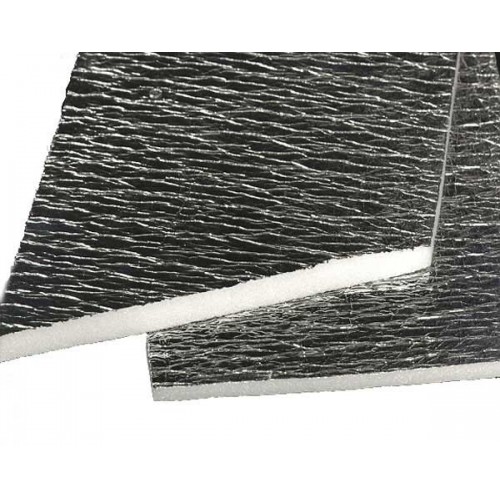Reflective Insulation vs Fiberglass: Which is the Best for Your Home?
Insulation plays a critical role in maintaining comfortable temperatures in homes and reducing energy costs. Two of the most popular options for homeowners and builders are reflective insulation and fiberglass insulation. Each has unique properties, advantages, and limitations, making the choice largely dependent on individual needs. In this article, we’ll explore these two insulation types in detail to help you determine the best fit for your home.

Understanding Reflective Insulation
Reflective insulation, also known as radiant barrier insulation, is designed to reflect radiant heat rather than absorb it. Made from materials like aluminum foil or reflective-coated film, it is often combined with a backing material such as polyethylene bubbles, cardboard, or foam boards.
- How It Works: Reflective insulation uses its shiny surface to repel heat waves, reducing heat transfer in spaces like attics or walls. It is especially effective in hot climates where radiant heat from the sun is a major concern.
- Material Composition: Aluminum-based reflective surfaces paired with insulating core materials.
Key benefits of reflective insulation include:
- Lightweight and easy to handle
- Superior performance in high-temperature environments
- Resistance to moisture and mold
However, its effectiveness can depend on proper installation and the presence of an air gap for optimal thermal performance.
Understanding Fiberglass Insulation
Fiberglass insulation is made from fine strands of recycled glass and sand, woven into mats or loose-fill forms. Known for its versatility, fiberglass insulation is a go-to solution for thermal and acoustic insulation in residential and commercial buildings.
- How It Works: Fiberglass traps air within its fibers, reducing heat conduction and maintaining indoor temperatures. It is particularly effective for regulating both heating and cooling needs.
- Material Composition: Glass fibers combined with binding agents.
Key benefits of fiberglass insulation include:
- High R-value for its cost
- Wide availability and affordability
- Excellent soundproofing properties
However, fiberglass insulation can degrade over time if exposed to moisture, and improper handling may release harmful particles.
Key Differences Between Reflective and Fiberglass Insulation
| Aspect | Reflective Insulation | Fiberglass Insulation |
|---|---|---|
| Material | Aluminum foil and reflective layers | Woven glass fibers |
| Functionality | Reflects radiant heat | Traps air to resist heat conduction |
| Installation | Lightweight and flexible | Bulkier and requires precise placement |
| Climate Suitability | Best for hot, sunny climates | Effective in a wide range of climates |
Energy Efficiency Comparison
- Reflective Insulation: Excels in reflecting up to 97% of radiant heat, making it ideal for homes in warmer regions. However, it offers limited resistance to conductive heat transfer.
- Fiberglass Insulation: Boasts a higher R-value, making it effective for resisting conductive heat flow in various climates.
Cost Analysis
While fiberglass insulation is generally more affordable upfront, reflective insulation can provide greater long-term savings in energy costs for homes in hot climates. The choice ultimately depends on the climate and specific needs.
Durability and Longevity
Reflective insulation tends to have a longer lifespan due to its resistance to moisture and mold. Fiberglass insulation, on the other hand, can degrade if exposed to damp conditions, requiring replacement over time.
Environmental Impact
Reflective insulation uses aluminum, which is recyclable but energy-intensive to produce. Fiberglass insulation incorporates recycled glass, offering a more eco-friendly manufacturing process.
Ease of Installation
- Reflective insulation is lightweight and easier to handle, often requiring minimal tools for installation.
- Fiberglass insulation, while more widely used, demands careful handling to avoid exposure to fine glass particles.
Best Applications for Reflective Insulation
Reflective insulation is most effective in:
- Attics exposed to direct sunlight
- Garages and sheds requiring heat deflection
- Homes in hot, sunny climates
Best Applications for Fiberglass Insulation
Fiberglass insulation is ideal for:
- Walls and ceilings requiring high thermal resistance
- Homes in regions with extreme cold or seasonal changes
- Soundproofing interior spaces
Health and Safety Considerations
Reflective insulation poses minimal health risks during installation. Fiberglass, however, can release tiny particles that irritate the skin and respiratory system, necessitating protective gear.
Climate and Regional Suitability
Reflective insulation thrives in hot climates, while fiberglass insulation offers versatility for both cold and warm environments.
User Experiences and Reviews
Homeowners in warmer regions often praise reflective insulation for its effectiveness in cutting cooling costs. Conversely, those in colder climates find fiberglass insulation indispensable for retaining heat.
Conclusion
Choosing between reflective insulation and fiberglass insulation depends on your home’s specific needs, climate, and budget. Reflective insulation is ideal for deflecting radiant heat in hot climates, while fiberglass insulation offers robust thermal resistance across various temperature ranges. Carefully assess your requirements to make the best choice for your home.
FAQs
-
Which insulation is better for hot climates?
Reflective insulation is more effective in hot climates due to its ability to reflect radiant heat. -
Can reflective insulation and fiberglass insulation be used together?
Yes, combining both can enhance energy efficiency by addressing different types of heat transfer. -
Is fiberglass insulation safe to handle?
With proper protective equipment, fiberglass insulation can be installed safely. -
Does reflective insulation work in cold climates?
While less effective in cold climates, it can still help reduce heat loss when paired with other insulation types. -
What is the R-value of reflective insulation?
Reflective insulation typically has a lower R-value than fiberglass insulation but excels in radiant heat reflection. -
How long does fiberglass insulation last?
With proper maintenance, fiberglass insulation can last 20–30 years but may need replacement if exposed to moisture.

